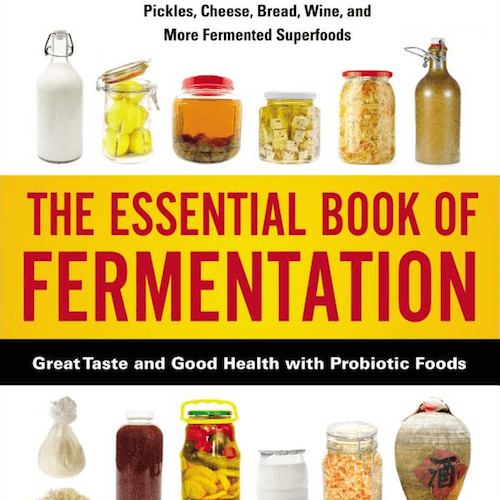
Nine out of every 10 cells in your body aren’t your body’s tissues. They are separate microorganisms, totaling a couple of pounds, that live within your intestines. They are called your intestinal flora, or more colloquially, your gut bacteria.
These living organisms have a profound effect on your immune system, your digestive system, your overall health, and even your mood. One of the best things you can do to support their health is to give them a daily drink of milk that’s been cultured with kefir grains—sort of like a liquid cheese, only with more varied kinds of microbes.
Kefir—pronounced “keh-fear” in its North Caucasus homeland, but pronounced “keefer” by most Americans—is a mixture of about 30 kinds of bacteria and yeasts. This mix is called grains, but it really is just lumpy curds that form when milk is cultured into kefir.
Here are some of the benefits a daily glass of kefir provides:
- Kefir coats your intestinal walls with a rich mix of beneficial microbes that help prevent pathogenic microorganisms from colonizing your gut.
- Kefir produces a polysaccharide called kefiran that imparts a very appealing tangy flavor and smooth texture to the drink. Kefiran also holds fecal matter together, adding bulk and improving regularity. You will be amazed.
- Kefir’s beneficial microbes stimulate your immune system to attack disease organisms and reduce inflammations.
- Your intestinal flora communicate with your brain, and your brain with your gut, through a nerve that links them. Kefir’s flora-strengthening action improves this communication.
- Kefir has been shown to reduce blood pressure and lower blood cholesterol in animal tests.
Taking advantage of kefir’s benefits by making it yourself is simple; you don’t need much equipment, and the result is a tasty morning drink that’s good for you. Kefir can also be used as a substitute for milk, adding flavor and nutrition to baked goods, pancakes, a bowl of cereal, and more.
You can buy kefir at many stores, but making it at home is cheaper. Also, you can choose milk that doesn’t contain bovine growth hormone, and use organic milk. Your homemade kefir will not have artificial flavorings, colors, or other chemicals unless you wish to have them there.
You will need a plastic spoon, a plastic fine-mesh sieve, and a glass or ceramic bowl. Kefir is acidic, and acid and metal can create conditions that kill microbes, so avoid metal. Make sure your bowl is deep enough so the bottom of the sieve is held above the bowl’s bottom when you place the sieve on it.
You also will need a live kefir culture. Rather than taking potluck from a friend’s kefir grains or from a store-bought kefir to get a starter culture, buy a culture online from a reputable source, such as Organic Cultures or Cultures for Health. That way you’ll be getting the real thing for sure.
Specify that you want milk kefir culture. Kefir can also be made from water-based liquids, but that’s a different mix of microbes.
Makes about 1½ cups daily
SUPPLIES:
- Plastic fine mesh sieve
- Plastic spoon (holds 1 teaspoon)
- 1-quart widemouthed Mason jar
- Ring band to hold paper towels atop jar
- Glass or ceramic bowl to catch curds and whey
INGREDIENTS:
- 1 jar kefir grains (from online supplier; grown over several weeks following directions on packaging)*
- 1½–2 cups (or more, if desired) milk of your choice (whole, 2 percent, 1 percent, skim, or even fresh goat’s milk)
1. Kefir makes itself in a Mason jar kept in the cupboard over 24 hours. Note that the jar is covered with a piece of paper towel held down by the Mason jar’s ring band.
2. Pour the contents of the Mason jar into the sieve as it sits on the bowl. Much of the whey will pass through the sieve into the bowl right away.
3. Transfer seven plastic spoonfuls of curd back into the Mason jar. This is the starter for the next batch. (Tip: Use a clean Mason jar every 5 or 6 days.)
4. Add milk to the Mason jar. I add a cup and a half to 2 cups. Re-cover the Mason jar with paper towel and the ring, then place it back in the cupboard for use 24 hours later. The longer you allow the culture to sit, the thicker the curds and the tangier the whey. One day is perfect for my taste.
5. Using the plastic spoon, scrape the curds back and forth against the sieve’s mesh and into the ceramic bowl.
6. Mix the sieved curds with the whey to make a smooth liquid kefir. Pour the kefir into a glass, and enjoy it with your breakfast.
* Your culture will most likely arrive as a powder in a packet with directions. Follow the directions, using a clean Mason jar. It will take your culture several weeks to wake up and recharge itself, ideally at a temperature between 70°F and 75°F. After that point you can use it in the process below, and it will reliably produce a thick mix of curds and whey every 24 hours.











